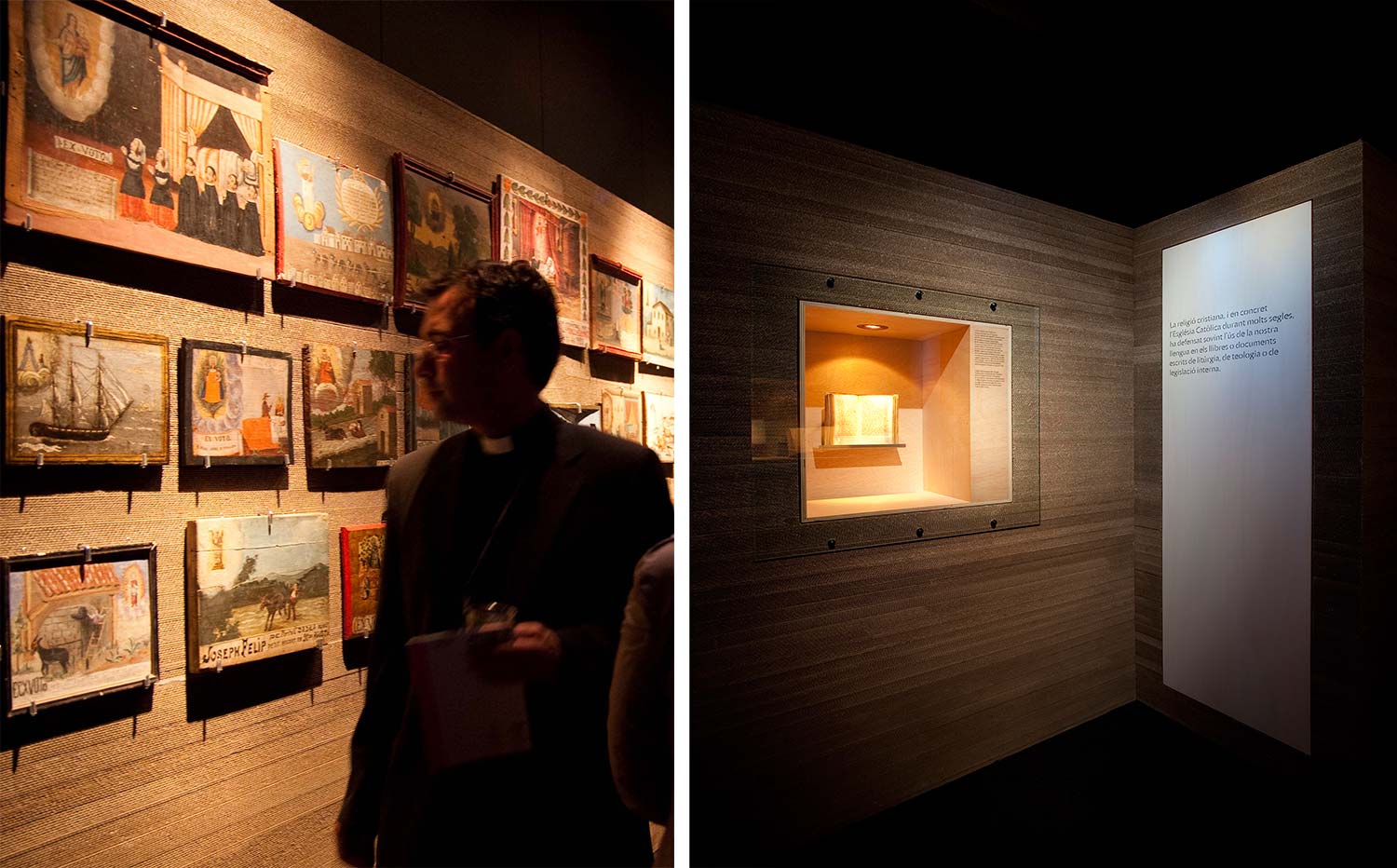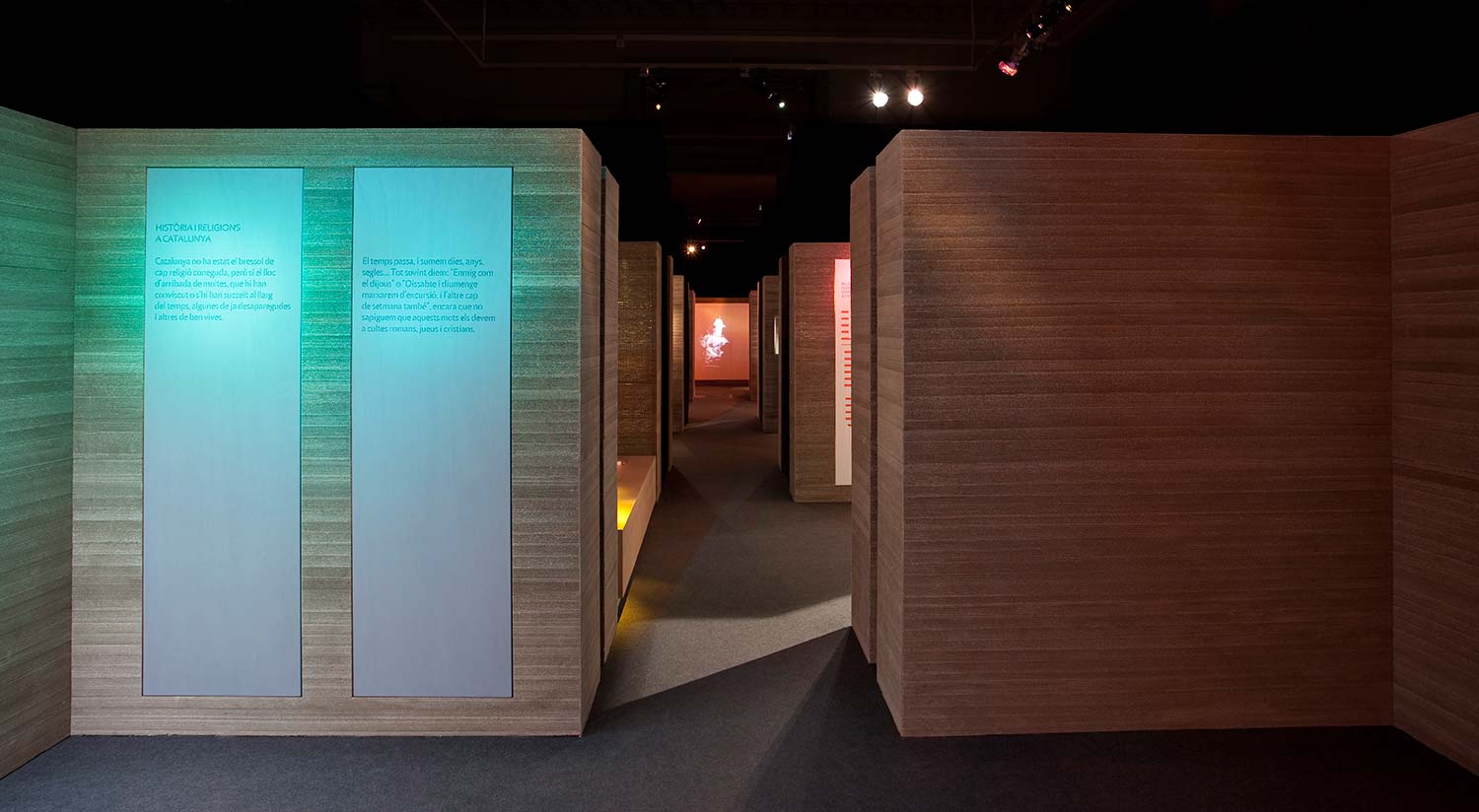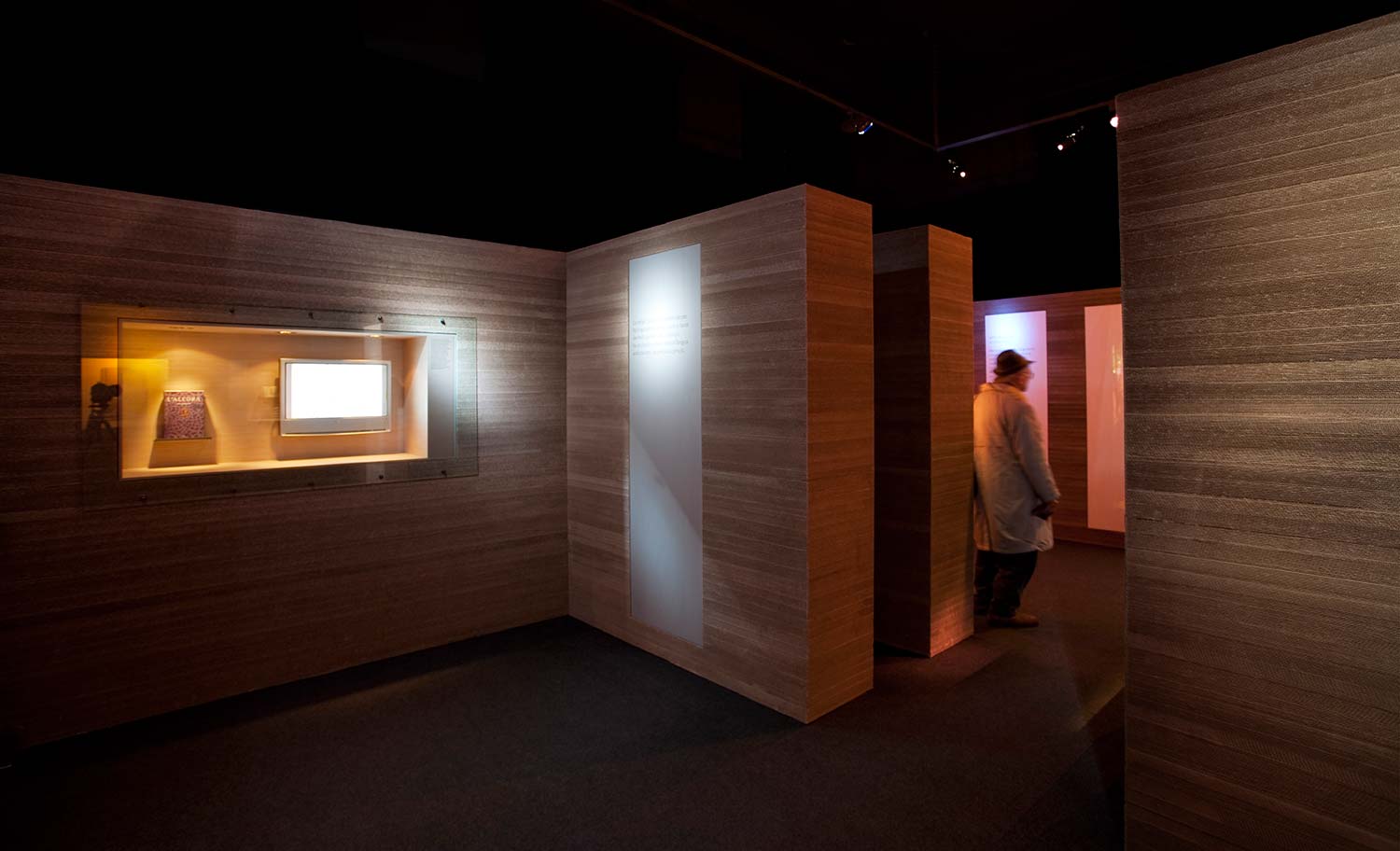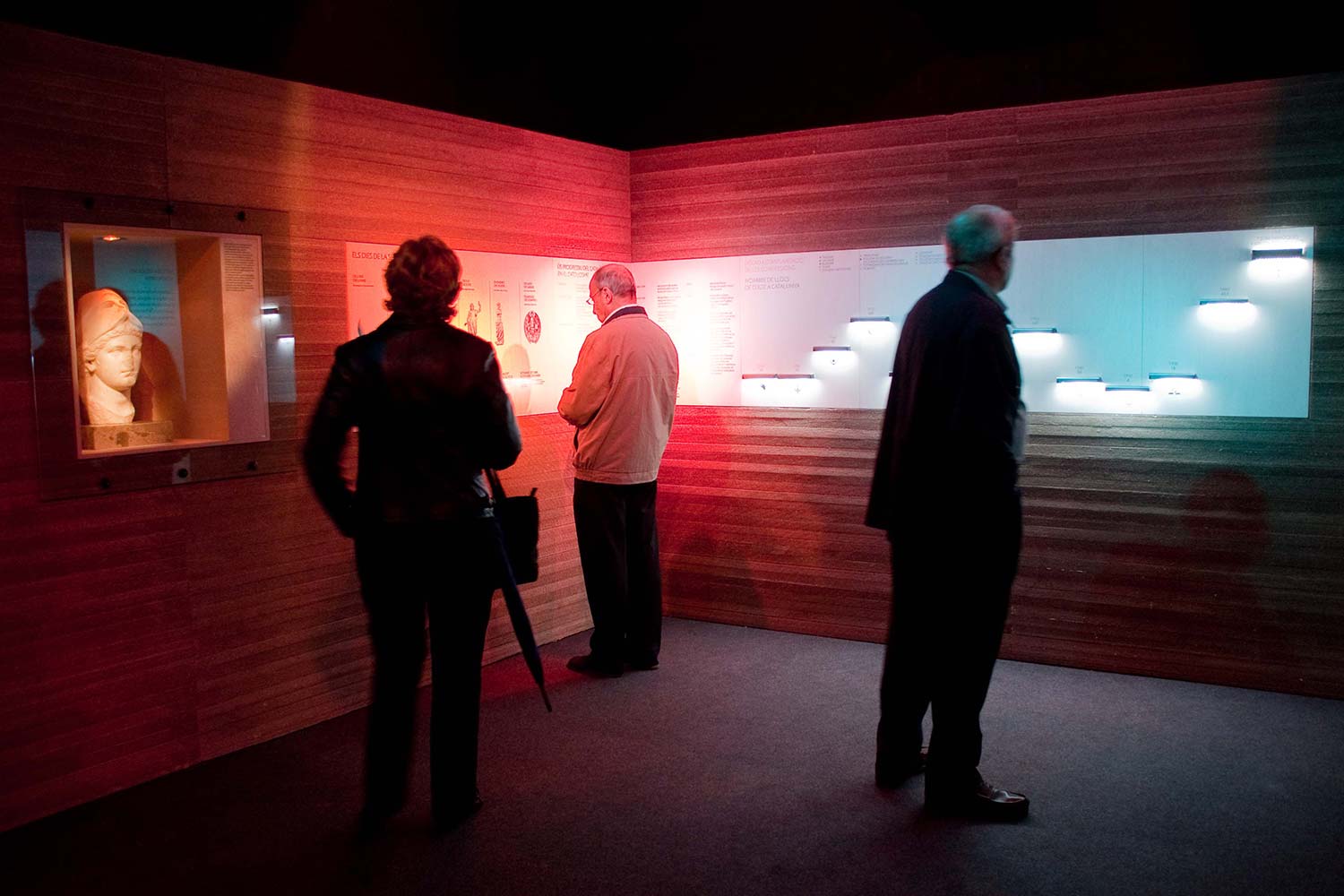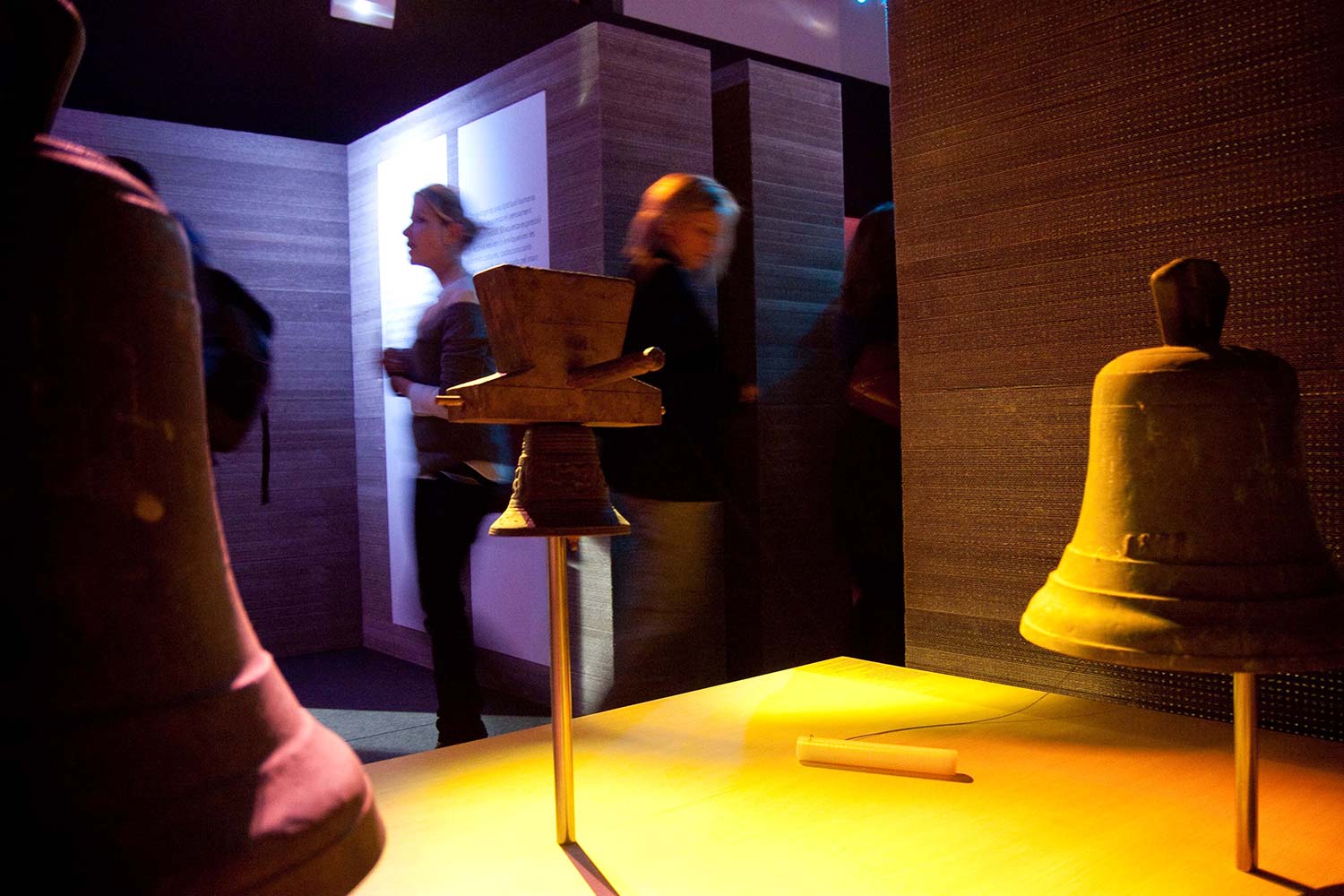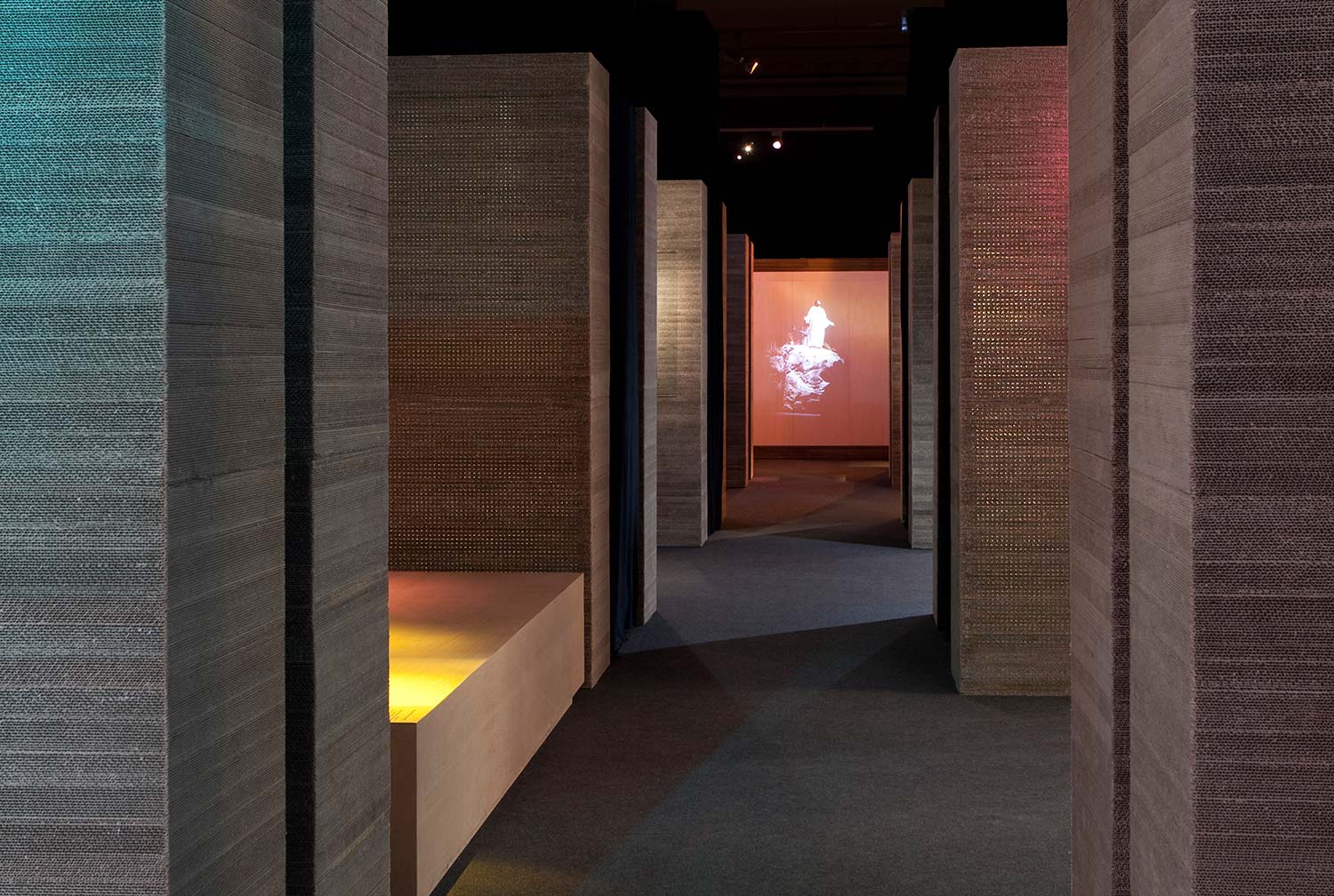

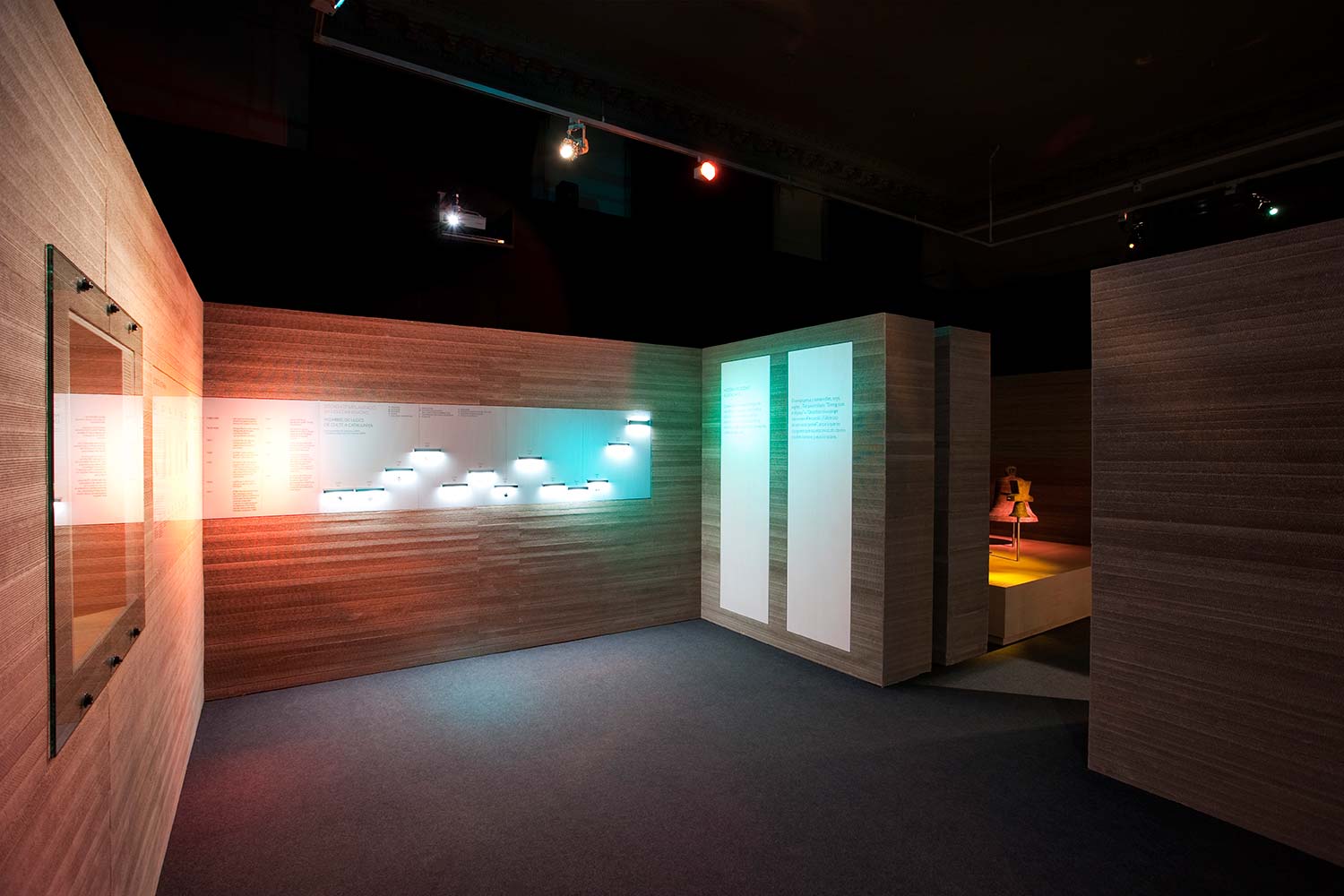
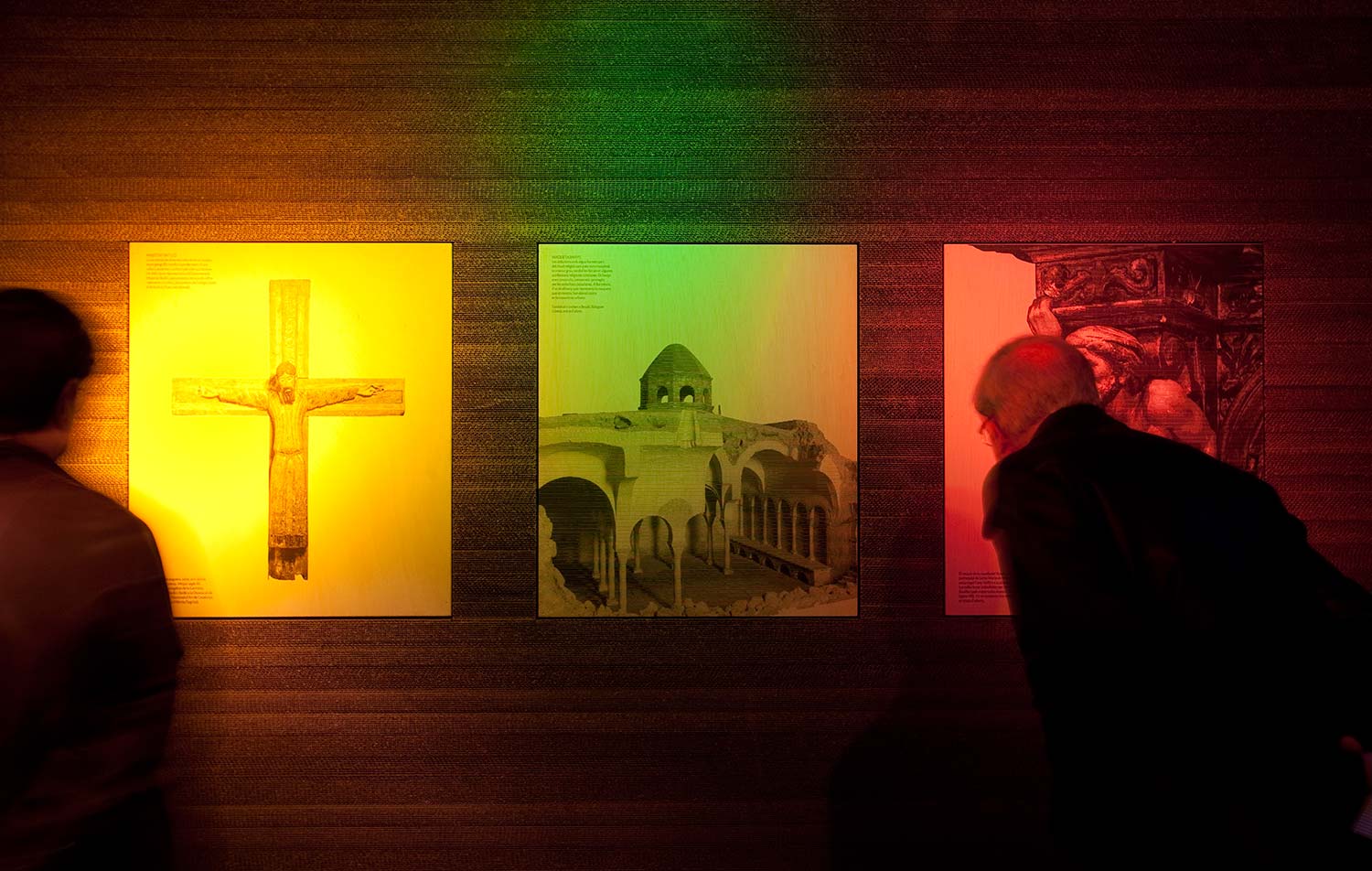
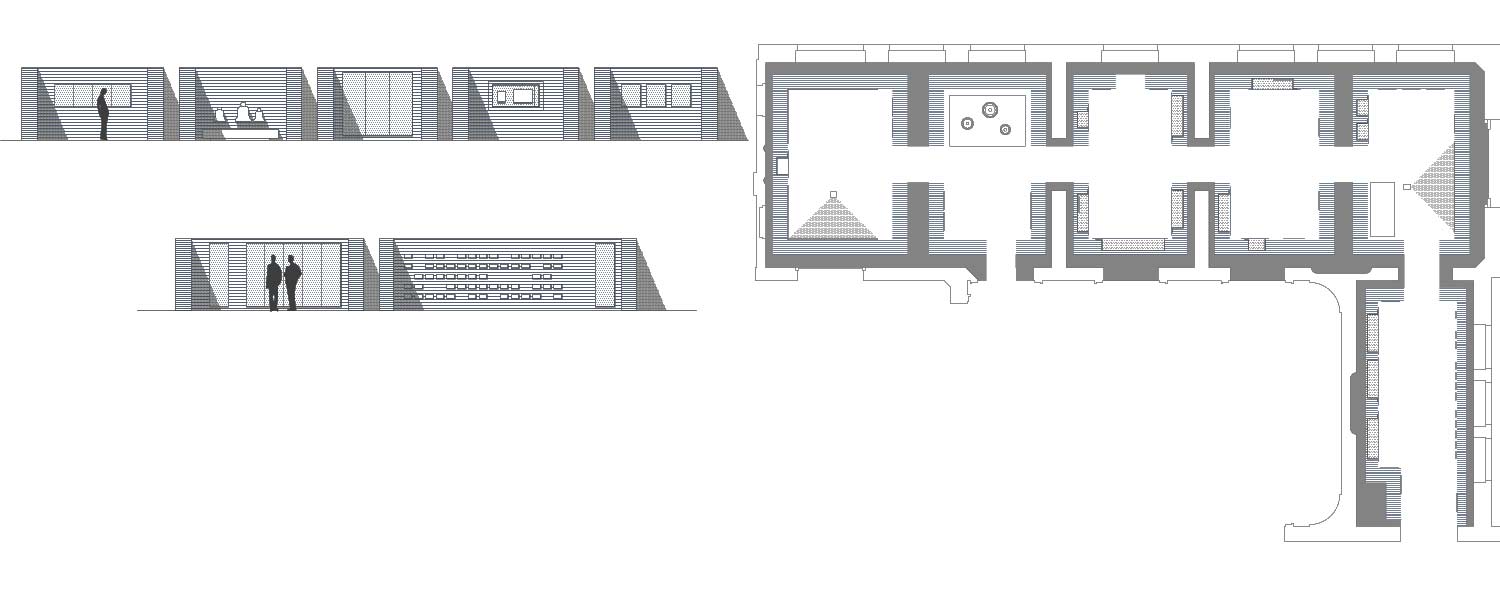
The exhibition is conceived as a succession of uniform containers, reinforcing the curatorial thesis to treat all religions equally. These containers are connected by a backbone which ties all of the spaces, and therefore the religions, together. This homogeneity only breaks at singular points, such as at the entrance. In this, elements of high symbolic value can be strategically placed within the design: campaigns at the entrance which allow for public interaction, a colourful projection with festive content and a sculpture of great historical value at the end of this axis.
The project seeks to express purity and austerity through its use of materials. At the root of the project is a commitment to the use of recycled and recyclable materials, primarily corrugated cardboard. This cardboard is stacked, creating large pallets with some gaps to contain objects. The lining of the interior showcases, for safety and maintenance reasons, is made from standard untreated wood. Finally, a simple pane of glass with no more details than necessary protects precious objects. Each material reflects the theme of austerity and commitment to sustainable temporary architecture.


